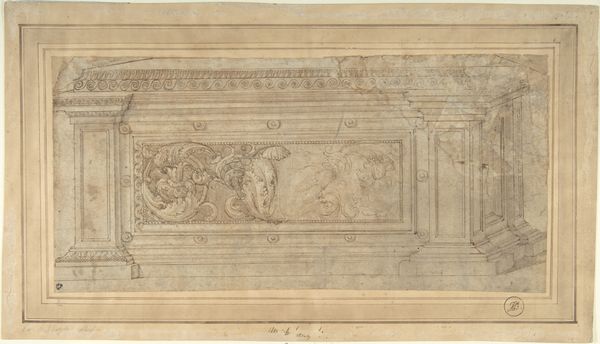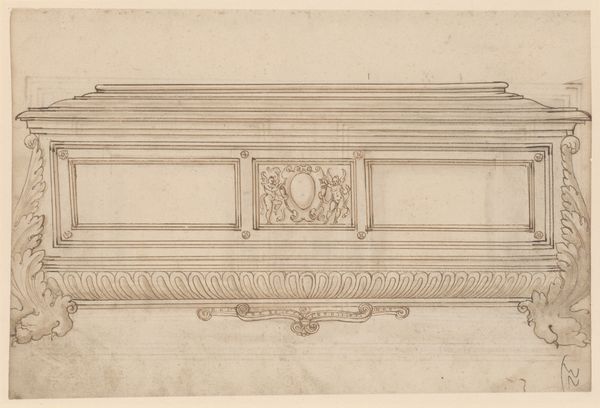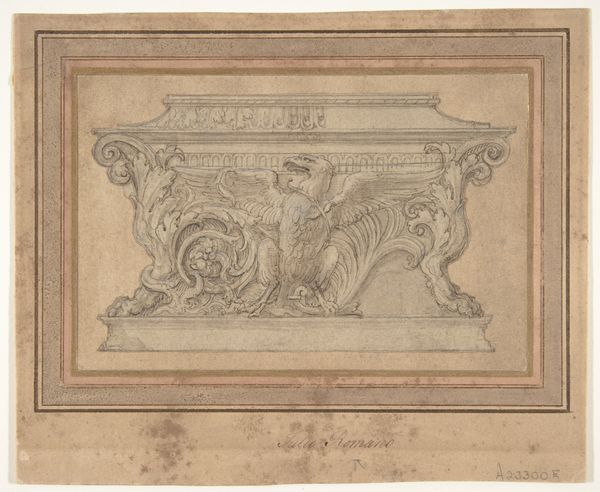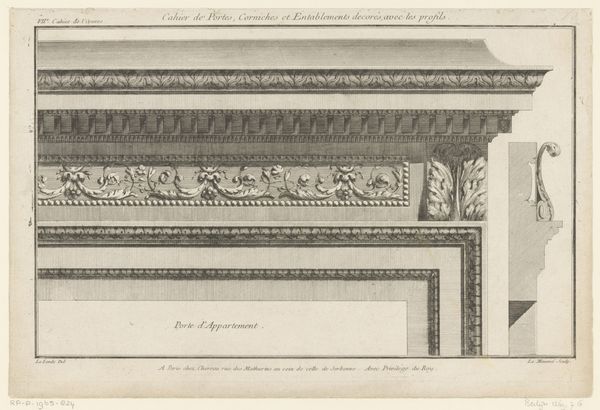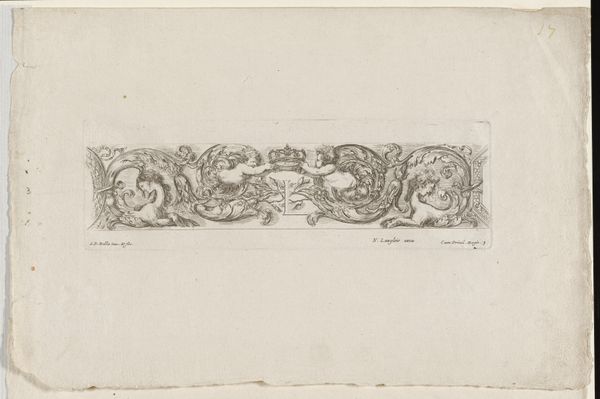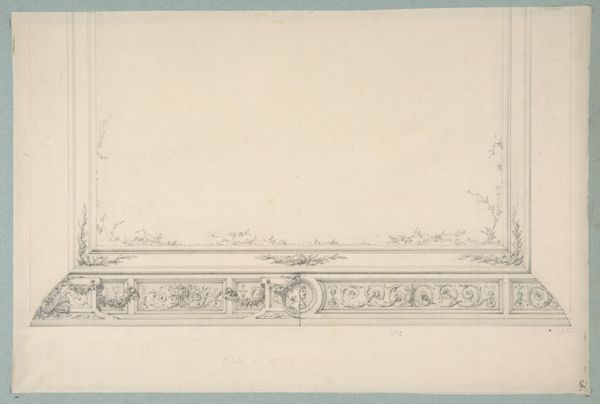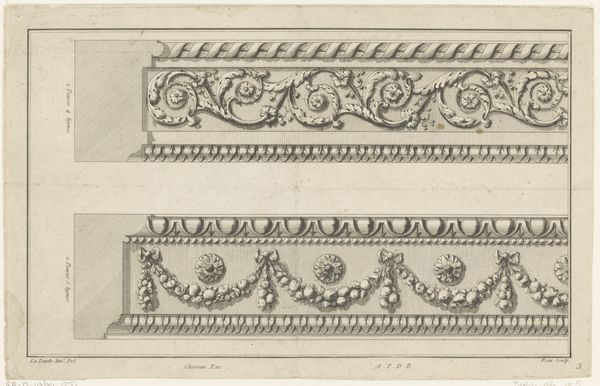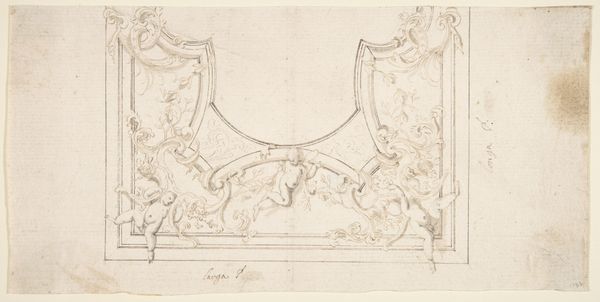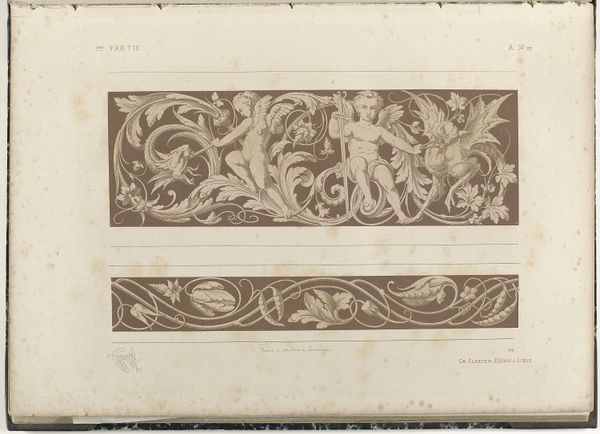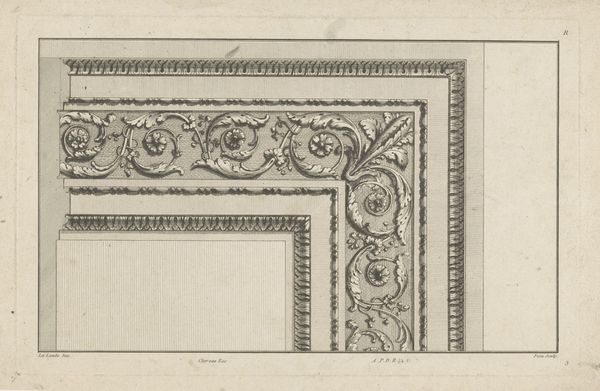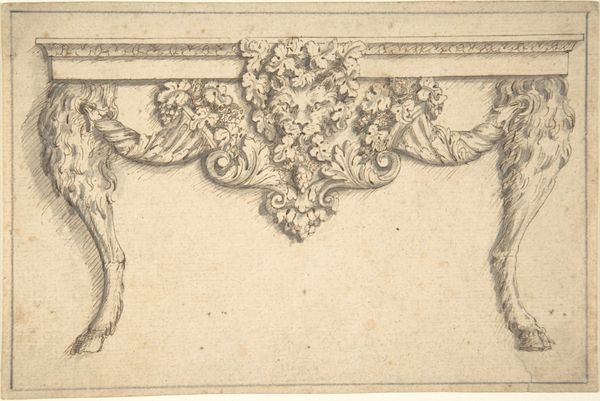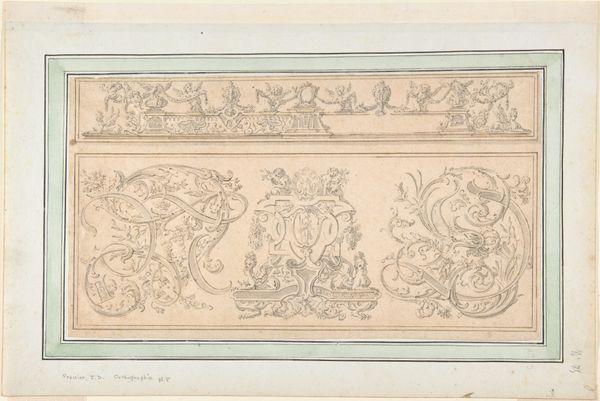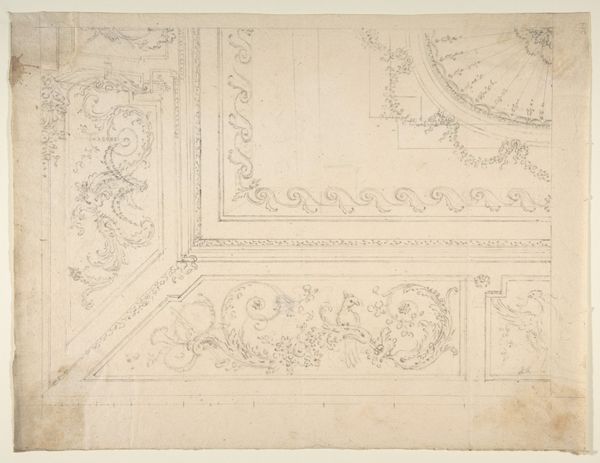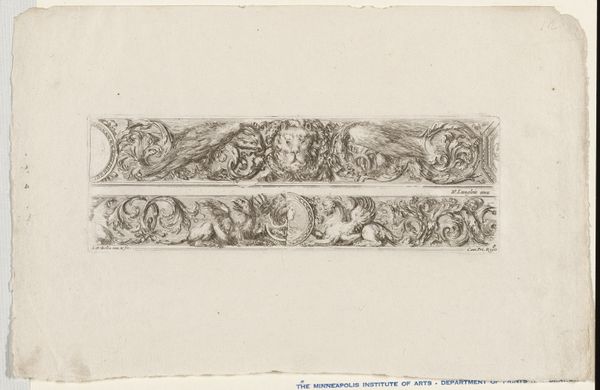
drawing, ornament, print
#
drawing
#
ornament
# print
#
line
#
italian-renaissance
Dimensions: 1 7/8 x 11 1/4in. (4.7 x 28.5cm)
Copyright: Public Domain
Curator: Here we have "Design of Rinceaux," an interesting print made between 1470 and 1510, likely conceived by the hand of Andrea Mantegna. It now resides here at the Metropolitan Museum of Art. Editor: My initial impression is one of quiet elegance. The delicate line work tracing this foliate pattern evokes a sense of classical serenity. It feels intentionally understated, despite the inherent complexity of the scrolling design. Curator: The purpose of ornamental prints like this in the Renaissance served a vital function beyond mere decoration. Consider how workshops would utilize these images, circulating them to convey motifs and decorative themes. They directly impacted visual culture. Editor: Exactly, the continuous scrolling vine pattern itself has ancient roots, evoking growth, fertility, and continuity. Even the palmette forms tucked within seem to gesture towards ideas of rebirth and cycles. There's a sense of a hidden, symbolic language at play. Curator: The political symbolism in classical decorative art was highly influential during the Italian Renaissance, serving purposes to support rulers and civic agendas. Prints such as this offer the artist an incredible ability to disseminate messages to patrons from a diversity of socio-economic status. Editor: It is compelling how something seemingly as simple as a scrolling vine, carefully rendered and disseminated through printmaking, became a potent vehicle for expressing complex ideological narratives of renewal, growth, and even societal ambitions. It makes me want to reconsider where else these rinceaux may have appeared. Curator: Thinking about its impact on visual literacy then and how that permeates culture to this day, that connection from history is compelling. It shows art isn't created in a vacuum. Editor: Right. What seemed merely decorative on the surface now shows a connection to deeply ingrained cultural stories about cycles of life, prosperity, and even the ambitions of civilizations. Thank you for the context; it’s now revealed new dimensions.
Comments
No comments
Be the first to comment and join the conversation on the ultimate creative platform.
